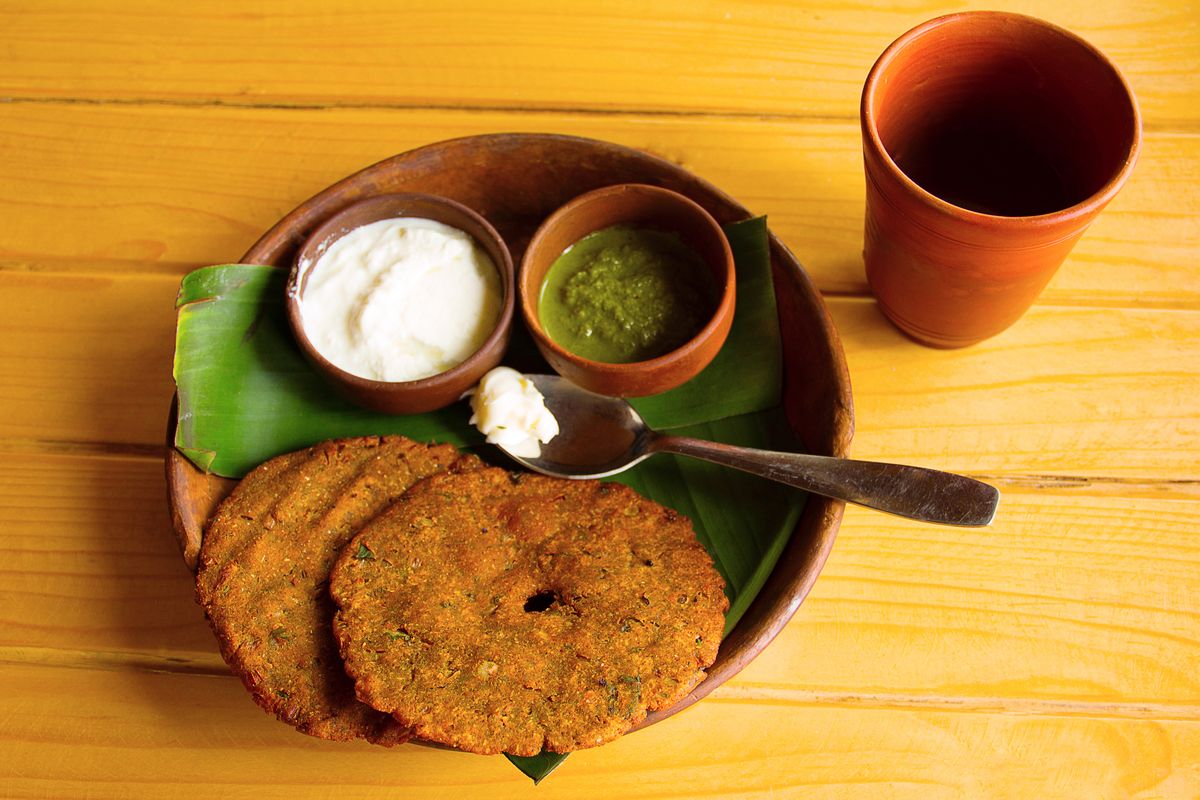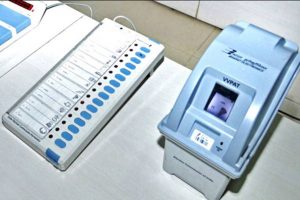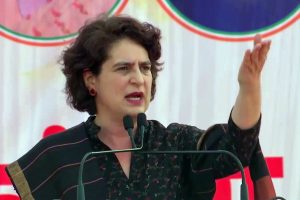Navratri is celebrated twice a year, once during spring (Chaitra Navratri) and once during fall (Sharad Navratri). These are the two major season changes, when our bodies become more vulnerable to diseases. A good diet is important to boost our immunity and cope with the seasonal changes. Buckwheat flour (kuttu ka atta), chestnut flour (singhare ka atta), amaranth flour, barnyard millet flour (samak ka atta)/ barnyard millet (samak rice), tapioca pearls (sabudana), nuts, seeds, milk and fruits are considered as saatvik foods which can be consumed during Navratri fasting. The flours used in Navratri foods are all gluten-free. The diet itself is endorsed by Ayurveda, being saatvik in nature, and is extremely healthy if prepared in a healthy manner.
Use these traditional grains and flours that constitute Navratri diet. These flours are considered healthier alternatives to wheat flour. Another important ingredient that is used in preparing Navratri food is rock salt/sendha namak. It is a better option over regular table salt as it is good for blood pressure and it helps absorb minerals better than common salt.
Here are a few healthy Navratri recipes which you can try at home which also support a healthy lifestyle:
Masala vrat dosa with coconut and mint-coriander chutney: Make a batter using one cup of barnyard millet flour and one cup of chestnut flour adding half cup of sour curd and enough water to make a perfect consistency like normal dosa batter. Add one teaspoon of rock salt and mix well. Keep covered for an hour. In the meantime, prepare potato masala.
To make potato masala, take five medium-sized boiled potatoes. Mash them roughly. Heat one tablespoon of pure ghee in a pan. Add one tablespoon of grated dry coconut. Stir until it turns light brown in colour. Add one teaspoon of grated ginger. Saute for a minute on low flame. Add mashed potatoes. Add four to five finely chopped green chillies and rock salt according to your taste. Mix all ingredients well together simmering and sautéing on medium-low flame for 10 minutes. Turn off flame, masala is ready. Now heat a non-stick pan. Grease it with pure ghee. Beat the dosa batter for 30 seconds. Pour two tablespoons of the batter on the non-stick pan and spread it in circular shape like dosa. Add little pure ghee on the edges. When the base is cooked, turn it around and cook from the other side until slightly golden. Turn again and spread the potato masala in the centre. Fold it and eat with coriander and coconut chutney.
To make coconut chutney, take out a raw coconut from its hard shell and peel its brown skin. Wash it and chop it in small pieces. Put it in a food processor and make a fine paste. Take out the paste in a glass bowl. Add little rock salt and lemon juice and mix well. Coconut chutney is ready.
To make mint-coriander chutney, take one cup of coriander leaves and half cup of mint leaves. Wash them thoroughly. Add them to a food processor. Add three green chillies, little salt and lemon juice. Make a fine paste adding very little water if required to grind. Mint-coriander chutney is ready.
Eat this vrat masala dosa with both the chutneys. This quantity will serve two people.
Vrat cheela with aloo ki subzi: Take one cup of kuttu ka atta and one cup of singhara ka atta. Take 100 grams of pumpkin and grate it after peeling it off. Add this grated pumpkin, little rock salt, three to four green chillies and little black powder in the mixture of flour. Add water slowly and gradually and make a thick batter because after a few minutes, the salt will make pumpkin to leave the water and the batter will become thinner naturally. Mix well and keep the batter covered to rest for an hour. After an hour, mix the batter again and heat a non-stick pan. Grease it with pure ghee. Pour two tablespoons of this batter on the pan and spread it in a circular shape like cheela. If the batter is too thick to spread, you can add little water to adjust the consistency. When the cheela becomes golden from the base, turn it around and cook the other side until golden brown. When done, take it out in a serving plate.
To make aloo ki subzi, take three boiled potatoes and mash them roughly. Heat one tablespoon of pure ghee in a pan. Add half teaspoon of cumin seeds. Add paste of three tomatoes, half teaspoon of grated ginger and two finely chopped green chillies. Cook this masala on low flame for five minutes stirring occasionally. Add boiled and mashed potatoes, one-third teaspoon of red chilli powder and salt according to taste. Mix all ingredients well. Add one and a half cup of water. Give a good stir. Cover the pan and cook for 15 to 20 minutes on low flame.
Serve crispy hot cheelas with steaming hot aloo ki subzi. You can serve mint-coriander chutney also with this dish.
Vrat paratha with shahi paneer: To make vrat paratha, take two cups of chestnut flour. Add three to four medium-sized boiled and properly mashed potatoes in it. Add a little salt and one teaspoon of black pepper powder. Mix all ingredients well and keep aside covered for an hour. In this resting time, potatoes will leave their moisture due to the presence of salt. So this moisture will be used to make the dough soft. No need to add extra water. Mix the dough well again and knead it properly to make a soft and stiff dough. Make small balls out of the dough like for normal parathas. Roll these balls in a circular shape like parathas one by one with the help of a rolling pin and board. Heat a non-stick pan. Add pure ghee and cook the paratha from both sides until golden crisp.
To make shahi paneer, boil 6 medium size tomatoes in an open pan. Take them out and let them cool. Grind them to a fine paste in a food processor and strain the puree. Discard the residue. Heat one tablespoon of pure ghee in a pan and add the tomato puree. Add one teaspoon of red chilli powder and a pinch of sugar. Stir it on medium-low flame until the gravy starts leaving ghee on the sides. Add salt and paneer cubes using 200 grams of paneer. Mix all ingredients well. Turn off the flame and add two tablespoons of fresh cream and mix well. If the gravy is too thick, add little milk and give a stir. Shahi paneer is ready. Eat vrat parathas with hot shahi paneer.
The whole structure of Navratri fasting supports the idea of healthy eating if followed properly. Stay away from deep fried foods. They will result in doing as much harm as taamsic food items would do. Make sure that your Navratri diet has a little of every nutrient you can rustle up so that you get all the goodness from the saatvik foods.











